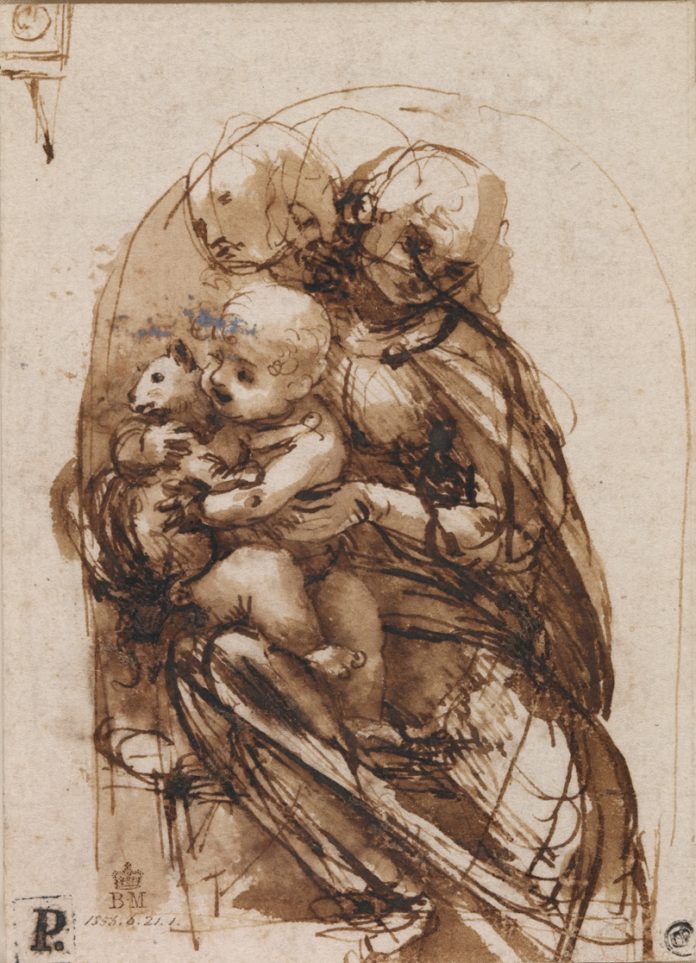
There’s a reason many describe line as the most basic and important of the visual elements. Lines are infinitely variable in their expression of time, movement, emotion, and intensity — qualities that are directly translated to artworks made only from lines: drawings. How did some of art history’s greatest minds employ line? Find out here.
The New Mexico Museum of Art is one of only two U.S. institutions to host a major exhibition of historical drawings on loan from the British Museum. Opened on May 27 and on view through September 17, “Lines of Thought: Drawing from Michelangelo to Now: from the British Museum” presents an important examination of the enormous variety of methods used by some of history’s greatest artists, including Leonardo da Vinci, Michelangelo, Albrecht Dürer, Piet Mondrian, Paul Cézanne, Pablo Picasso, Bridget Riley, Barbara Hepworth, Henry Moore, Franz Kline, and Rachel Whiteread.

Drawn from the British Museum’s world-class collection of more than 50,000 drawings, “Lines of Thought” will showcase some 70 drawings that exhibit powerful designs and expressive sketches through the ages. “A drawing can capture and preserve a record of an artist’s thoughts, rendering visible ideas, developing and refining them, serving as a key conceptual tool throughout each stage of the artistic process,” explains museum director Mary Kershaw. “‘Lines of Thought’ explores the numerous and invaluable lessons one can learn from examining the drawings of past masters in the context of artists working today, from Michelangelo to Mondrian, Rembrandt to Rachel Whiteread, Piranesi to Picasso.”
To learn more, visit the New Mexico Museum of Art.
This article was featured in Fine Art Today, a weekly e-newsletter from Fine Art Connoisseur magazine. To start receiving Fine Art Today for free, click here.







